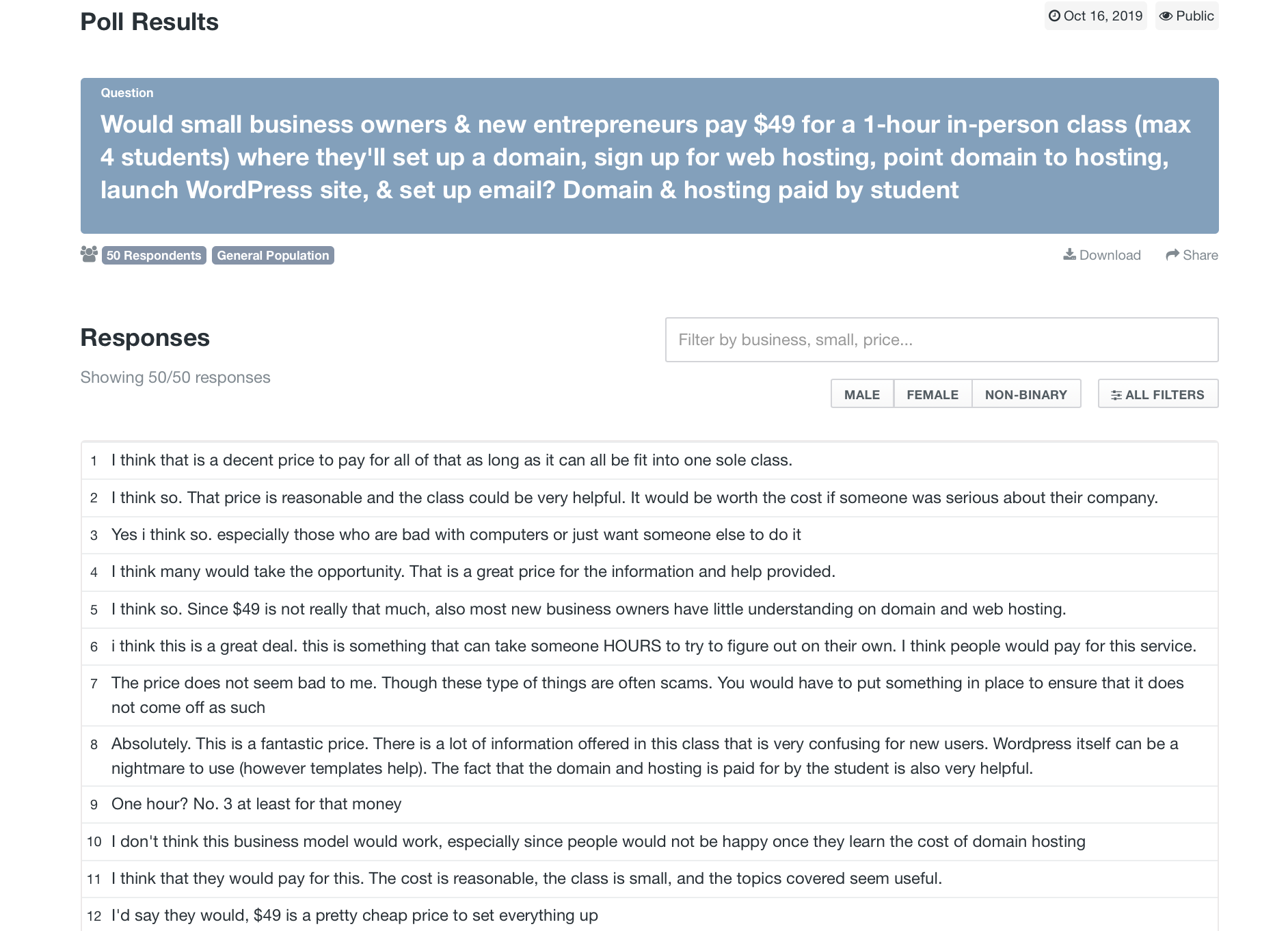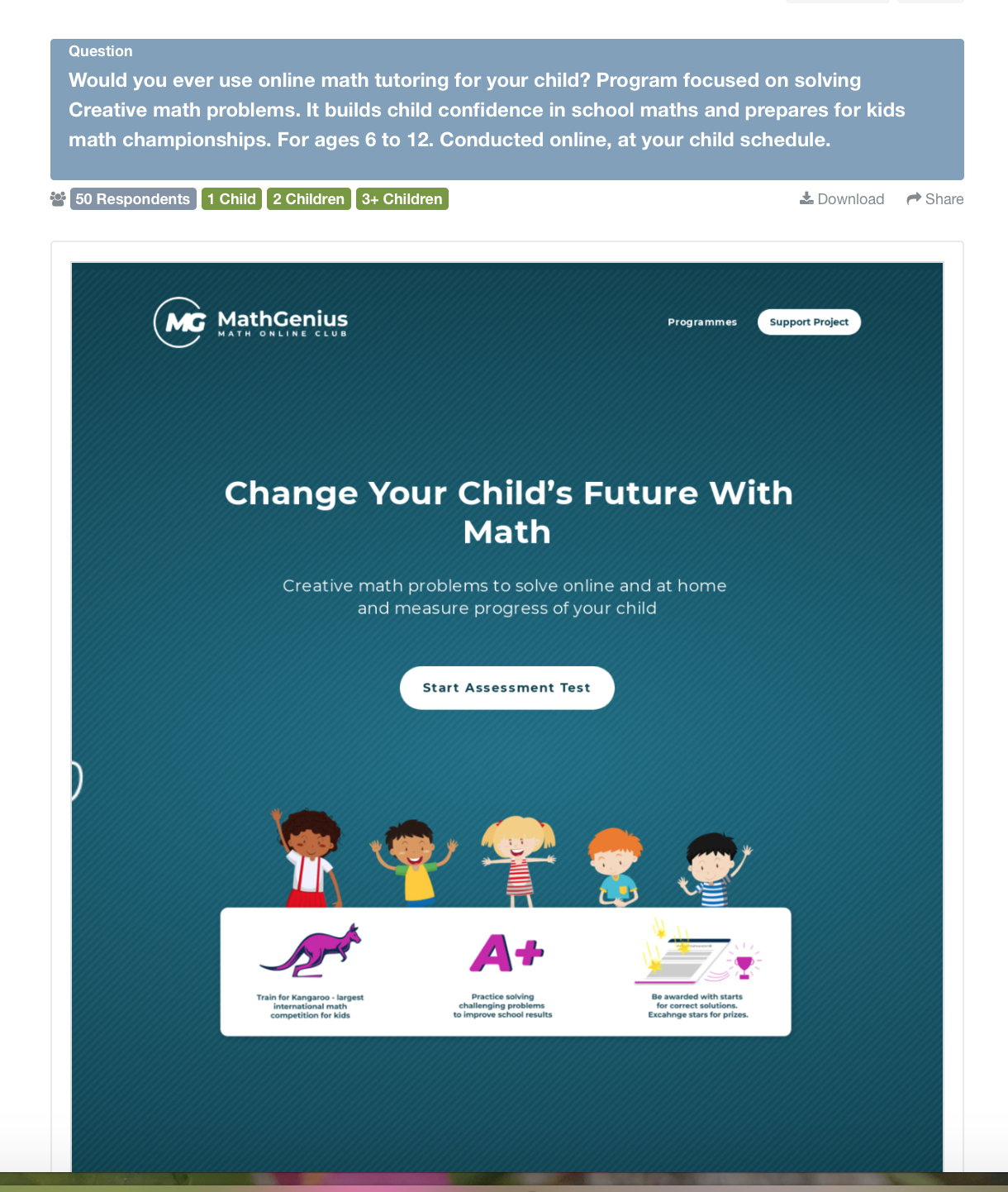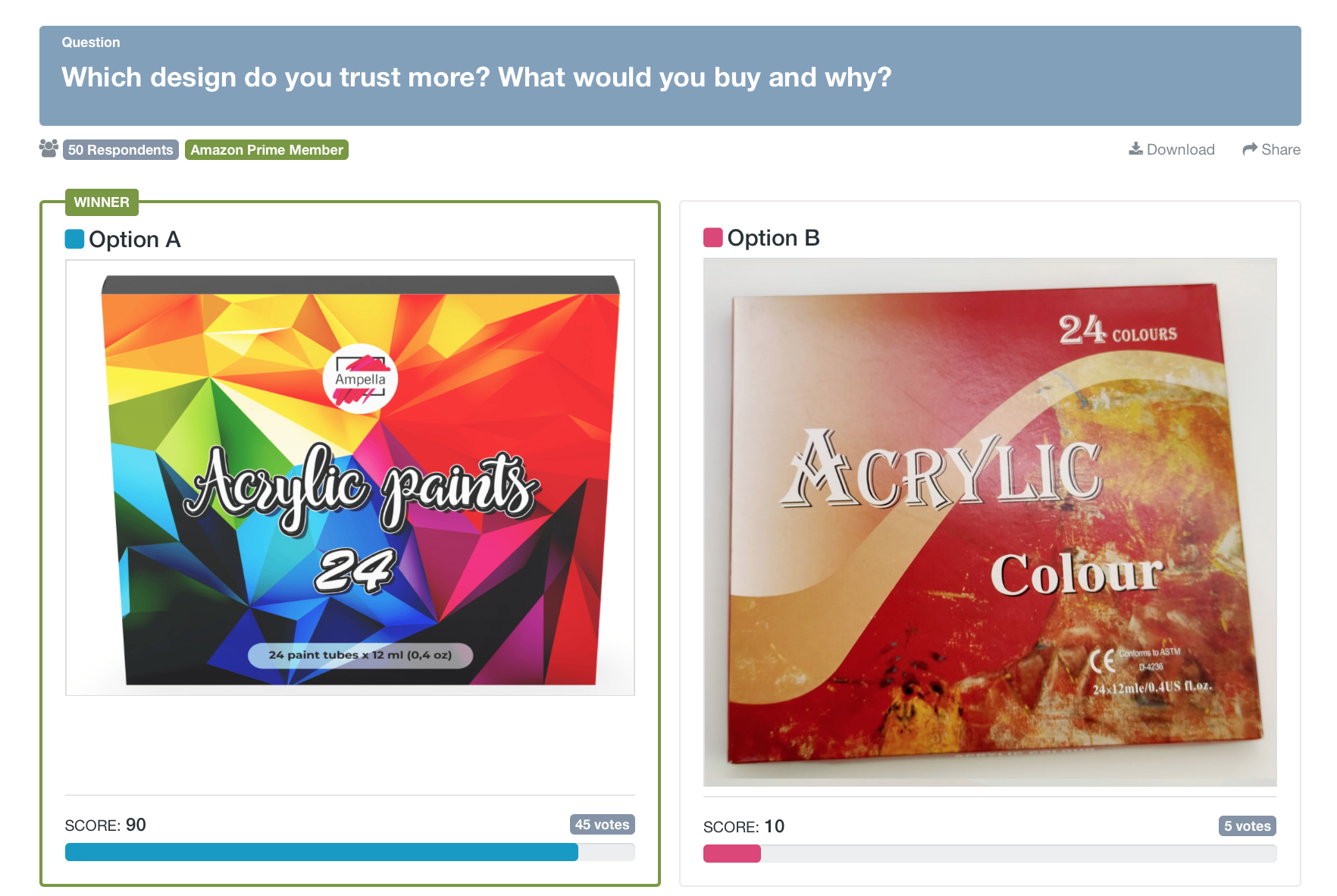We all think we know what our target market wants, right? Our product is something we would buy, after all. Obviously, everyone else will too.
But isn’t that how it always goes? New writers think their freshly written book is Pulitzer Prize material until a critique group chews it up and spits it out in pieces.
Small brick-and-mortar businesses assume people will flock to their store, only to find out there’s no market for what they’re selling.
If you don’t implement consumer market research before starting your brand, you might just fail.
Take the fish market that once opened in landlocked southwestern Montana. The owners dreamed up the idea b
But they went bankrupt within four years, and they blamed the loss on a lack of sophisticated taste in the Gallatin Valley.
Could they have figured out whether a specialty fish market was desired before spending all that money to open a doomed business?
Absolutely! With consumer market research, you get a comprehensive feel for your audience’s needs and make your product or service align with them.
Don’t be that fish market. Do your consumer market research.
What is consumer market research?
Consumer market research is a process by which entrepreneurs collect buying behavior, preferences, and motivations about their target market via:
- Surveys
- Interviews
- Observation
- Data from secondary sources
While it’s a type of market research, consumer market research is more niche. Market research can mean anything from consumer market research to research between businesses, and much more.
What are the goals of consumer market research?
More than anything, the goal of consumer market research is to highlight the voice of the customer.
In concrete terms, use consumer market research to help you:
- Create a product that serves customers better than competitors
- Pinpoint and fulfill the needs of your customers
- Validate product or service ideas
- Dig deeper into the demographics and traits of your target market
You can do this by:
- First figuring out who your customers are
- Working to understand your target audience’s pain points and preferences
- Exploring all the ways your product and your customer can relate to each other
- Using email, paper surveys, and online polling software to help you collect opinions and data from your target market
These efforts help your brand thrive because it gets you in the mindset of your target customers.
You can then focus on giving your customers what they want and how they want it — avoiding the failure so often seen in small businesses.
If the fish entrepreneurs had surveyed residents of southwestern Montana and asked them if they would seek out a fish specialty market, what would respondents have said?
Maybe something like, “No. We can get this exact type of fish at the supermarket but at a lower price.”
You can do the same thing. If you’re planning to start a small sewing business out of your home, you could run surveys that ask potential customers in your area what type of items they’d be interested in.
Repairs? Custom-made baby blankets? Cute, comfortable masks? (Hello, 2020.)
Would customers be more likely to purchase if prices were slightly higher and you offered free shipping, or if they paid less for the masks but had to foot their own shipping costs?
Are they more likely to buy from an online storefront like Shopify, or one that’s part of a larger searchable database, like Etsy?
Once you’ve defined your audience and collected their demographic data —and you’ve begun to attract real customers — it’s time to gather their input.
Questions to ask
Ask your customers questions directly, face-to-face or via telephone if you can. Or put out an email survey with a small incentive for their honest feedback.
Pose questions like:
- Would you recommend our brand/product to a friend?
- What problem does this product/service solve for you?
- How well does it meet your needs/expectations?
- If you could add something to the product/service, what would it be?
- What do you like the most about the product or service?
- What do you like the least?
- Would you choose us over a competitor?
- What would you rate our business on a scale of 1-5, 1 being very poor and 5 being excellent?
Whatever you do, make sure you do not get defensive with your customers when they leave feedback. Remember, they’re providing you with valuable consumer marketing research in primary source form.
And they will remember how they felt when you asked them these questions.
A cautionary tale
A couple years ago, I went to get a cavity filled at a young dentist’s office in Wasilla, Alaska. Upon my first visit, he handed out a bag filled with goodies: magnets, an ice scraper, a mug, a notepad, a pen, and more — all branded with his logo.
His front desk workers were friendly, the atmosphere relaxing.
But I was getting my first-ever cavity filled. Even at twenty-something years old, I felt nervous. The injections to numb my gums hurt, and what’s more, they didn’t work.
I felt every jabbing stab of that filling. The entire time, the dentist chatted with the hygienist about random stuff, barely acknowledging my presence.
Afterward, I went to the bathroom and cried.
So, I left a three-star review on the dentist’s Facebook business page, highlighting the pros and cons of the business.
The business owner — the dentist — left a lengthy, defensive response and called me himself the next day to try to convince me it hadn’t been that bad.
He seemed angry that all his convincing couldn’t force me to change the review from three stars to four or five.
I never went back to that dentist, and neither did anyone else in my family. If the dentist had instead empathized with my experience and promised to do better the next time, I would most likely have given him one more chance.
Moral of the story? Don’t get defensive.
Instead, apologize and offer a form of reparations if you can, or at least a promise of better service next time. Take the criticism as valuable feedback that can help you avoid making the same mistake twice.
This type of critique is the best way to make sure your business succeeds.
A non-cautionary tale
A couple of weeks ago, I was trying out one of my favorite dishes — malai kofta — at a new Indian restaurant in Anchorage, Alaska.
Instead of making it with a tomato-based sauce, the owner uses coconut milk.
“Tell me what you think,” he said as he handed me the dish. “If you would rather I make it with tomato, I’ll take that into consideration.”
He went on to tell me that he appreciates all feedback, good or bad, because it helps him make his business better.
That’s a perfect consumer marketing research approach right there.
How to use PickFu for consumer market research
PickFu makes it easy for you to survey your target market, and you don’t even have to leave your house.
Spend some time taking quality photos of your product. Or, if your brand is centered on providing a service, take time to refine your description.
Then input the question into a PickFu poll. For example, “Would you use this product? Why or why not?” or “How interested would you be in using this product?” with a 1- to 5-star rating scale.
This kind of research is called idea validation, and it’ll help you narrow the focus of your product while also collecting data and opinions from PickFu respondents.
Sample poll 1: help for the website-creating confused
Entrepreneurs regularly use PickFu for idea validation, as in this poll:
The business owner asked, “Would small business owners and new entrepreneurs pay $49 for a 1-hour in-person class (max 4 students) where they’ll set up a domain, sign up for web hosting, point domain to hosting, launch WordPress site, & set up email? Domain & hosting paid by student.”
As someone who sometimes gets confused by the intricacies of online websites, I can assure you that this sounds like a golden opportunity. Here’s what PickFu respondents had to say:
- “I think that is a decent price to pay for all of that as long as it can all be fit into one sole class.”
- “I think this is a great deal. This is something that can take someone HOURS to try to figure out on their own. I think people would pay for this service.”
- “One hour? No. 3 at least for that money.”
- “Many would find this all in one package very useful. I know some business owners outsource this for a large fee, or set it up themselves haphazardly.”
The general consensus is that the class sounds helpful, but the hours allotted might not be enough.
With this insight, the business owner can refine the idea and re-test it with PickFu’s audience of entrepreneurs and small business owners for the most precise and helpful feedback.
Sample poll 2: Math help for desperate parents
In another idea validation poll, a brand asked an audience of 50 parents if they
Here’s what parents had to say:
- A four-star reviewer said, “I would most definitely try online tutoring for my child. My
10-year-old loses interest easily and gets frustrated. Online would provide a different way for him to learn.” - A five-star reviewer added, “I am a creative and math is hard for me. I went up to pre-calculus in college, but struggled the entire way! This platform seems very easy to navigate… I hope this platform can be expanded to include older children, too, and not stop at age 12.”
- One parent who gave three stars said, “I wouldn’t use online tutoring for my kids. I think school is enough, if they need help, I will do it myself.”
Overall, the idea received a rating of 4.2 stars out of 5, with encouraging comments all the way.
Several respondents made comments that suggested expanding the range to a slightly older demographic of kids, as six-year-olds aren’t often deep in the throes of math woes and teenagers are.
Once you’ve affirmed that your target audience would be likely to purchase your product, you can continue to develop the business.
If your audience does not seem interested, however, it’s time to do some work to figure out how to make your product more viable. Use the critiques you receive on PickFu to help you!
Split testing on PickFu
The best thing about using PickFu to split test is that — unlike in a traditional split test — your target audience gives you written feedback.
Take the case of this poll, where an entrepreneur asked Amazon Prime members, “Which design do you trust more? What would you buy and why?”
The two photos are totally different. One looks unprofessional and old, and it’s possible that the PickFu user has taken a screen shot of it from a competitor’s listing on Amazon to find out what the audience thinks.
In any case, almost no one voted for Option B.
One respondent wrote of Option A, “I LOVE the bright colors. This box is very attractive. The other box is nasty.”
Yikes! (But true.)
Another wrote, “Vibrant and colorful! Doesn’t look like a dirty, recycled frozen pizza box from the 1980s…”
Yet another added, “I trust [Option] A MUCH more then B. Option B looks like a pizza box. Definitely would not buy option B. Option A looks like a professional box of paints.”
So there you have it. This poll took just a few hours to complete, and you’ll often get results even sooner than that.
You get to keep the results forever and take your time to study every comment and tidbit of demographic data, helping you carry out effective consumer marketing research.
Create your first PickFu poll today
It’s easy to create a poll on PickFu and start gathering important data as soon as, well, today.
PickFu can help you do consumer research while you’re waiting for paper surveys and email survey responses to come back from customers who purchase your products.
Create your first poll now to get started on consumer market research from the comfort of your home.








